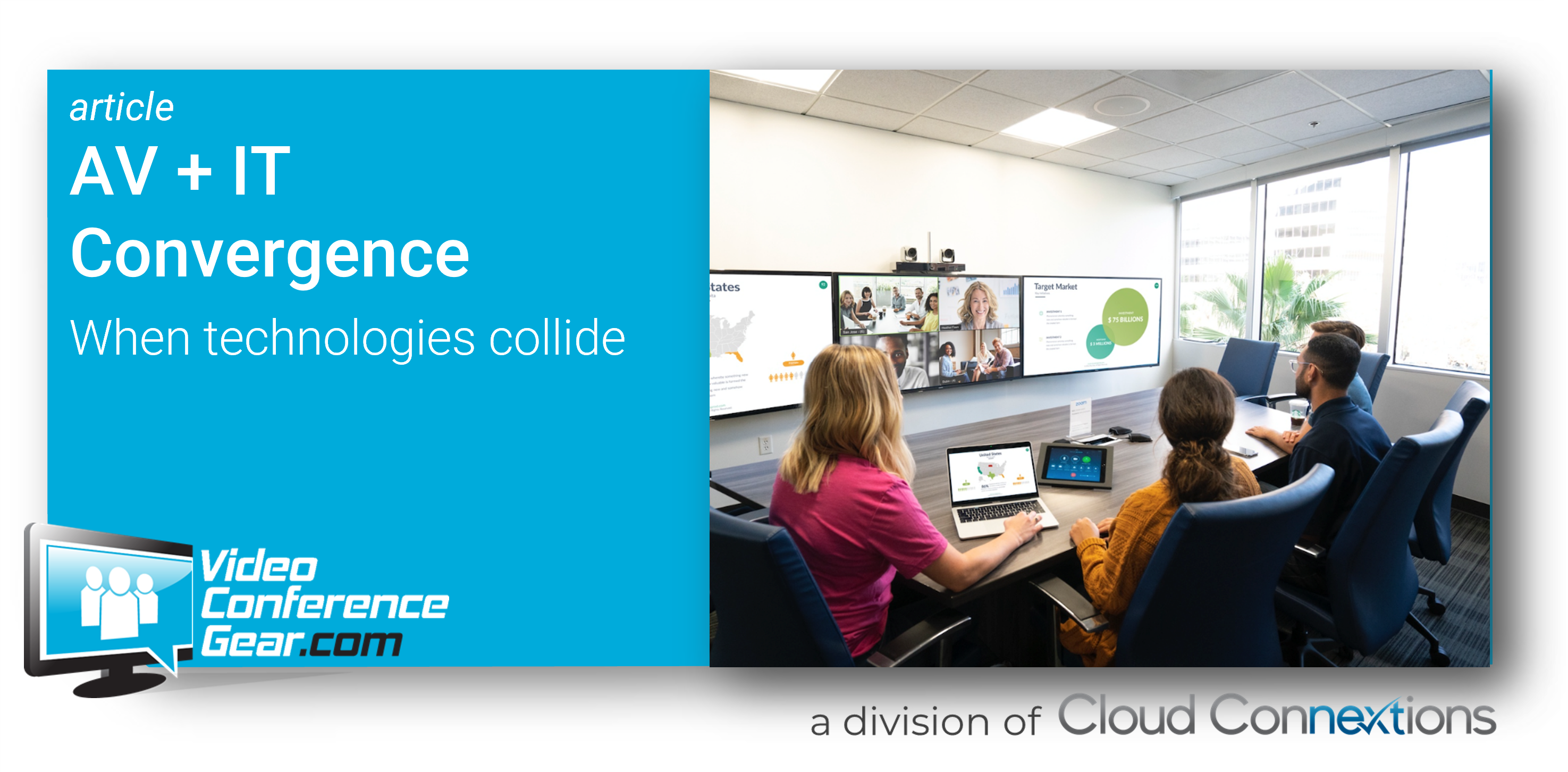When Technologies Collide: the convergence of AV and IT
Posted by Video Conference Gear on 7/27/2023

The convergence between AV (Audio-Visual) and IT (Information Technology) refers to the merging of traditionally separate audio-visual technologies and IT networks into a single unified system. This integration is driven by technological advancements, the rise of digital content, and the increasing demand for more flexible and interconnected solutions. The convergence has significant implications for various industries, including corporate, education, healthcare, entertainment, and more.
Here are some key aspects of the convergence between AV and IT:
Networked AV Solutions
Traditionally, AV systems operated independently of IT networks, often using proprietary protocols and hardware. With convergence, AV devices like cameras, projectors, displays, and audio systems are now connected to the corporate or institutional IT network. This integration enables centralized control, management, and monitoring of AV equipment, making it more efficient and easier to scale.
IP-Based Communication
AV over Internet Protocol (AVoIP) has become increasingly popular due to the convergence. By leveraging IP networks, audio and video signals can be transmitted digitally, providing better quality, lower latency, and increased flexibility. This approach also allows AV systems to interoperate seamlessly with other networked devices and services.
Unified Communications
Convergence enables the integration of various communication tools and technologies into a unified platform. This includes combining video conferencing, instant messaging, voice calls, and collaboration software with AV elements, providing users with a comprehensive and seamless communication experience.
Cloud-Based Services
The convergence of AV and IT has facilitated the adoption of cloud-based services for AV solutions. Cloud-based video conferencing, streaming, and content sharing have become more accessible, enabling remote collaboration, content storage, and accessibility from anywhere with an internet connection.
Data Analytics and AI
Integrating AV with IT networks opens up possibilities for leveraging data analytics and artificial intelligence. For instance, cameras and sensors in AV systems can collect data for occupancy monitoring, audience engagement analysis, and space utilization, providing valuable insights for optimizing operations and user experiences.
BYOD (Bring Your Own Device)
The convergence encourages the adoption of Bring Your Own Device policies, where employees or users can use their personal devices (laptops, smartphones, tablets) to interact with AV systems. This increases flexibility and accessibility, enhancing user convenience and productivity.
Cost Savings and Efficiency
Convergence reduces the need for separate infrastructures and specialized cabling for AV systems, leading to cost savings and easier maintenance. IT personnel can manage both AV and IT components, streamlining operations and reducing the need for specialized AV technicians.
Future-Proofing
The convergence between AV and IT allows organizations to embrace new technologies and innovations more effectively. By building a unified and adaptable infrastructure, they can easily integrate future advancements without overhauling their entire setup.
Overall, the convergence between AV and IT is reshaping how organizations deploy and manage audio-visual solutions. It enables seamless integration, scalability, and improved performance, leading to enhanced collaboration, communication, and overall user experiences across various industries.
